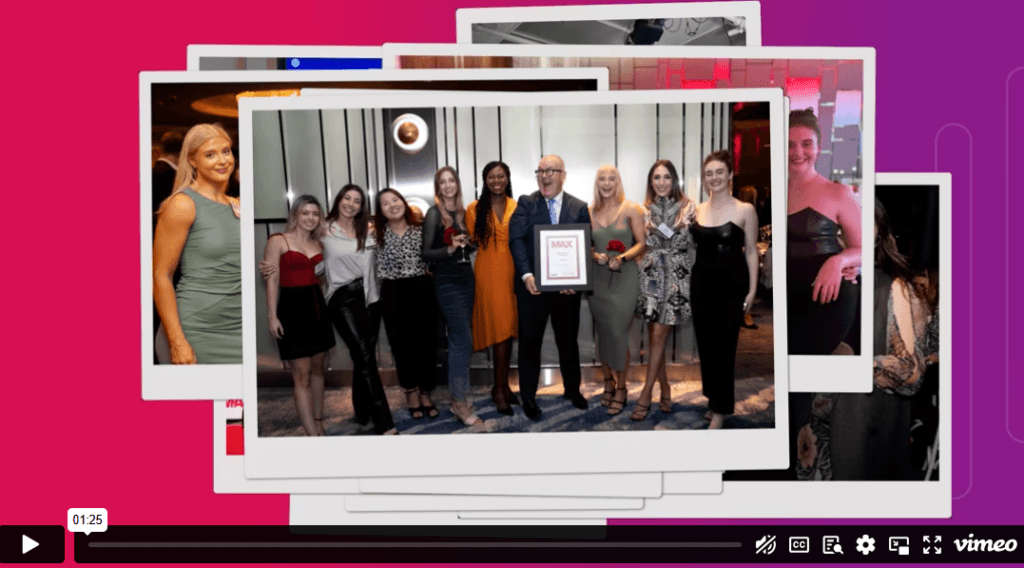2004 seems so long ago, but only yesterday that a shingle was hung on my first PR company, hiring a few good people, one a family member, and growing a jointly founded start-up venture that went on in its first year to become a Fast Start firm recognised by the Australian Financial Review.
If that introductory paragraph has you groaning at the thought of another humble boast written from the reflections of a misty-eyed senior hack-turned-flack, think again.
Searching for public interest relevance and contextual meaning has been a fruitful part of my professional path and the mentorship of my teams in various media and PR roles over decades. So this post should be no different. Nuance and reflection are underrated, but a place remains for it in 2025 despite the critical pace of our 24/7 news cycle and the demands placed on us all to ever increase performance and metrics.
I am privileged to have worked hard and thrived this long in the ever-changing financial services sector, to be self-determined for 21 years and to have enjoyed – parts of which were endured – a career in finance journalism and communications consulting at high levels spanning more than half a lifetime – some 35 years. I’m still learning!
Market cycles? I’ve seen a few. Crises and issues? Plenty. Government backflips and shenanigans? Too many to count. Investment product launches? Spiked many media releases as an Editor, wrote hundreds more as a PR, always trying to give a bit more value to the story than simply expecting the latest listed product to hit a bourse was of any special news interest.
Which is why when I started thinking about writing this look back yarn, the motivation was: be generous, give back, and underscore a few timely and practical learnings.
Which brings us to 2009.
Why that date? The time and place had some difficult dynamics. The 2008 global financial crisis hit hard, sentiment was rock bottom, financial advisers were naturally sceptical of anything ‘structured’ or difficult to explain to a client.
Kevin Rudd’s “Kevin 07” election meant Labor was holding government (not for long, for Kevin, as Julia Gillard took over the following year forming minority government), inflation had eased to about 2 per cent, off the previous 2008 high of 4.4 per cent.
And a US index brand called Vanguard Investments was about to enter the very niche Exchange Traded Fund space in Australia. An ETF launch and all-smiling bell ringing photo opportunity was not the everyday event it is today. It was the first of a few ETF brand launches I have been involved with as a PR.
Some observations. Firstly, the ETF market in Australia 16 years ago was pre-pubescent.
State Street and BlackRock had first mover bragging rights, but collectively the sector held just $1Billion. There was little love for ETFs (many people could not even get the acronym right – calling them ‘EFTs’ for what seemed an eternity) and the momentum from brokers and financial advisers was awfully slow. The professional advisers saw no great merit guiding clients into passive funds. After all, active stock selection was their value proposition, right? And buying an index was considered either lazy or a way to get bogged down by laggard companies caught in the index net.
Additionally, the adviser industry in 2009 was held to structural ransom (no offense guys) by a few large Bank-owned platforms, which charged access fees to product issuers to be listed on their approved product lists. Naturally, a direct, listed product that skirted the ‘clip the ticket’ methods of the dominant platforms was not high on the priority lists of those platforms who controlled the lion’s share of retail funds flow at that time.
Fast forward, of course, and the rise of SMSFs investing directly, the easing of the stranglehold of platform pricing models on advisers and products, and the so-called democratisation of access to the markets (best interest duty, anyone?) has meant the ETF market has, in 2025, reached a market cap of circa $250 billion and is on track after just 16 years to hit the magical $300 billion mark. Competition is thriving, the depth of products on offer is impressive and the sheer weight of ETF choices has well exceeded the paltry S&P All Ords and Small Cap indices that made up the slim domestic equity choices available in 2009.
Vanguard, which was privately derided in early 2009 for even considering entering the ETF space (we announced the red V’s intention to launch in February, with the ASX listing occurring in May), is today a market leader holding some $69 billion of the total ETF pool at end of February 2025. Its entry, introducing ease of access to global equity markets at a highly compelling price point, was pivotal, though at the time the whole venture seemed for many reasons just a bridge too far.
As recounted by good friend Robin Bowerman, who as my client at the time led the team at Vanguard on its ETF entry strategy in Australia, the hardest of many technical hurdles was a regulatory anomaly that meant all listed ETFs had the same ASX disclosure obligations as listed company securities.
This meant the ETF provider would need to negotiate with the ASX on a longish list of amendments to the standard listing rules that applied to a BHP or CBA, for example. On top of that, trying to arrange efficient tax and admin systems on cross-listed global securities at the time was a major challenge. And there were also the technicalities of enlisting (and explaining to investors) what a market maker was…you get the picture.
So, what did the Communications and PR look like? It was, naturally, focused on the higher purpose values of the brand…and strong proof points in support: Access. Indexing. Price. Three simple consumer benefit messages in the launch media release (I’ve tracked down a copy here).
Being able to buy the whole US market for seven basis points was a game changer. But the change in the nascent ETF game was subsequently slow. For the PR strategy, it was really an announcement burst, followed by a strategic education programme, and a slow burn one at that. On top, the primary target was to studiously follow the money: advisers and brokers were key audience groups, and they remain so today. As it turns out, that is a foundational part of the winning, 69-billion-dollar communications and engagement strategy!
To ignore the intermediated channel in your ETF communications strategy is a fast path to slow death. Or, by pursuing just a consumer-focused retail channel, as alluring as it may be because many have tried it and failed, you must also bring large doses of patience, deep pockets and a strong sense of optimism that retail investors will be swayed enough by your paid strategy, social media reels and prime time earned messages that they then convince the real gatekeepers of funds flow – their trusted adviser – to allocate discretionary funds to the latest in ETF markets.
Lessons? Direct, regular engagement at the government and industry level, followed by an intensive industry brand, education and listening programme amongst advisers and brokers was (and still is) a significant part of any ETF launch and maintenance strategy. A complementary awareness program for consumers is largely handled by strategic media placement and deep pockets on the paid side of media buying options.
Also, forget at your peril the dark horse of superannuation – the self-managed super brigade. SMSFs have turned out quite the noble group of self-determined brumbies galloping free on the open plains of empowered and engaged investing. That mob in 2009 grabbed the message of how costs matter, why indexing is not really un-Australian, and even that a buy and hold index strategy can pay strong long-term gains (for the record, that all-US, 7bps VTS fund of Vanguard has returned 14.5% since inception including dividends).
In terms of issues and crisis management? The media is forever fascinated in the C-word, conflict.
So, any hint of dissonance between, say, active versus passive, thematic versus synthetic, real asset or commodity versus any other asset class, problems with your market maker capacity…the first or last crypto or hedged forex product…these are a likely and obvious point of inquiry for any self-respecting personal finance journo.
In 2025, there are great brands entering the market, with a dozen new ETF products being launched in the first three months of this year. It’s great to witness the innovation, value and purpose uplift in the Australian ETF space.
Our firm Madden was privileged to work with and muster a resounding media launch for Mirae Asset’s Global X ETFs brand in September 2022 until early this year (click the image below to view a short video showcasing our work), and most currently we were engaged to help launch and support the PIMCO Australia ETF entry and long-term strategy for fixed income ETFs.

In many ways the ETF industry has only just begun. The words of Robin Bowerman are a fine way to end this post, when asked if he felt vindicated about the Vanguard launch, somewhat against the odds in 2009, he said:
“I don’t know about vindicated, but I think it’s a sense that ETFs have become a vehicle for hundreds of thousands if not millions of Australian investors to access market exposure. And it feels pretty good to have been a part of that industry development. And because, at the end of the day, as (Vanguard founder) Jack Bogle used to say, you can’t control the performance, but you can control cost.”
Great message!

